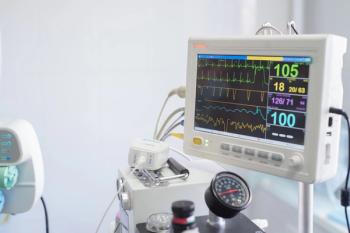
How to master robotic hysterectomy for difficult pathology
Kristin Patzkowsky, MD, provided a few tips and tricks for mastering robotic hysterectomy on difficult pathology in her presentation at AAGL's 50th Global Congress on MIGS in Austin, Texas.
When it comes to hysterectomies, it can be cumbersome to perform robotic hysterectomies on larger uteri or other difficult pathology. However, Kristin Patzkowsky, MD, assistant professor, assistant residency program director, and associate program director of FMIGS, Johns Hopkins Medical Institution, provided a few tips and tricks for mastering robotic hysterectomy on this type of pathology in her presentation “Go Big or Go Home: Mastering Robotic Hysterectomy for Difficult Pathology” at AAGL’s 50th Global Congress on MIGS in Austin, Texas.
During her presentation, Patzkowsky said the biggest trick is to master the simple hysterectomy first before performing robotic hysterectomies on more difficult pathology. Some other tricks she mentioned include avoiding being instantly overwhelmed, knowing your limits, going back to basics, getting comfortable with the retroperitoneum, and setting yourself up for success through case and equipment selection, trocar placement, and maximizing arm and assistant use.
When selecting a case for robotic hysterectomy, Patzkowsky recommends asking yourself 3 questions:
- Where are the anatomic landmarks (anterosuperior iliac spine (ASIS), umbilicus, and inferior costal margin)?
- Where is her pathology relative to these landmarks?
- What is the width of the torso based on bony landmarks, not pannus?
Robotic platforms also make a big difference when dealing with larger pathology. When using a da Vinci Xi/X vs a Si, the Xi/X’s 8 mm camera is more useful for camera/port hopping vs the Si’s 12 mm camera, according to Patzkowsky.
“Side docking is also easier [on the Xi/X platform] and the arms are more stream-lined,” she added. So, for someone who has a narrow, petite torso, you can get by a little easier with that Xi/X platform. I know personally, I’ve been able to elevate my game in terms of just really pushing the limits of uterine size because of the benefits of the Xi platform.”
If you encounter a case with large pathology, Patzkowsky suggests utilizing small rotational movements like a screw, port hop and/or camera hop, as well as employing the same basic steps as a simple hysterectomy. Also, she recommends using a 4th arm to its maximum potential and a beside assistant/uterine manipulator
Additionally, larger uteri require strong instruments. Patzkowsky suggests thinking about what your 4th arm might be (tenaculum, prograsp forceps, cadiere forceps) and what energy source you will you use (fenestrated bipolar, Maryland bipolar, vessel sealer, SynchroSeal).
“Also, with a large uterus, often the vasculature is the size of a garden hose, so you might want to think about using the vessel sealer or the SynchroSeal where you’re able to seal some larger vessels easier than you could with some of the other devices,” she said.
Finally, Patzkowsky left the audience with some tips for a successful procedure:
- Plan ahead
- Perform a thoughtful exam
- Know the steps of a hysterectomy and repeat
- Circle the beast
- Know your pelvic spaces and anatomy
- Normalize anatomy
Reference:
1. Patzkowsky K. Go Big or Go Home: Mastering Robotic Hysterectomy for Difficult Pathology. Presented at: AAGL’s 50th Global Congress on MIGS ; November 14, 2021; Austin, Texas.
Newsletter
Get the latest clinical updates, case studies, and expert commentary in obstetric and gynecologic care. Sign up now to stay informed.




